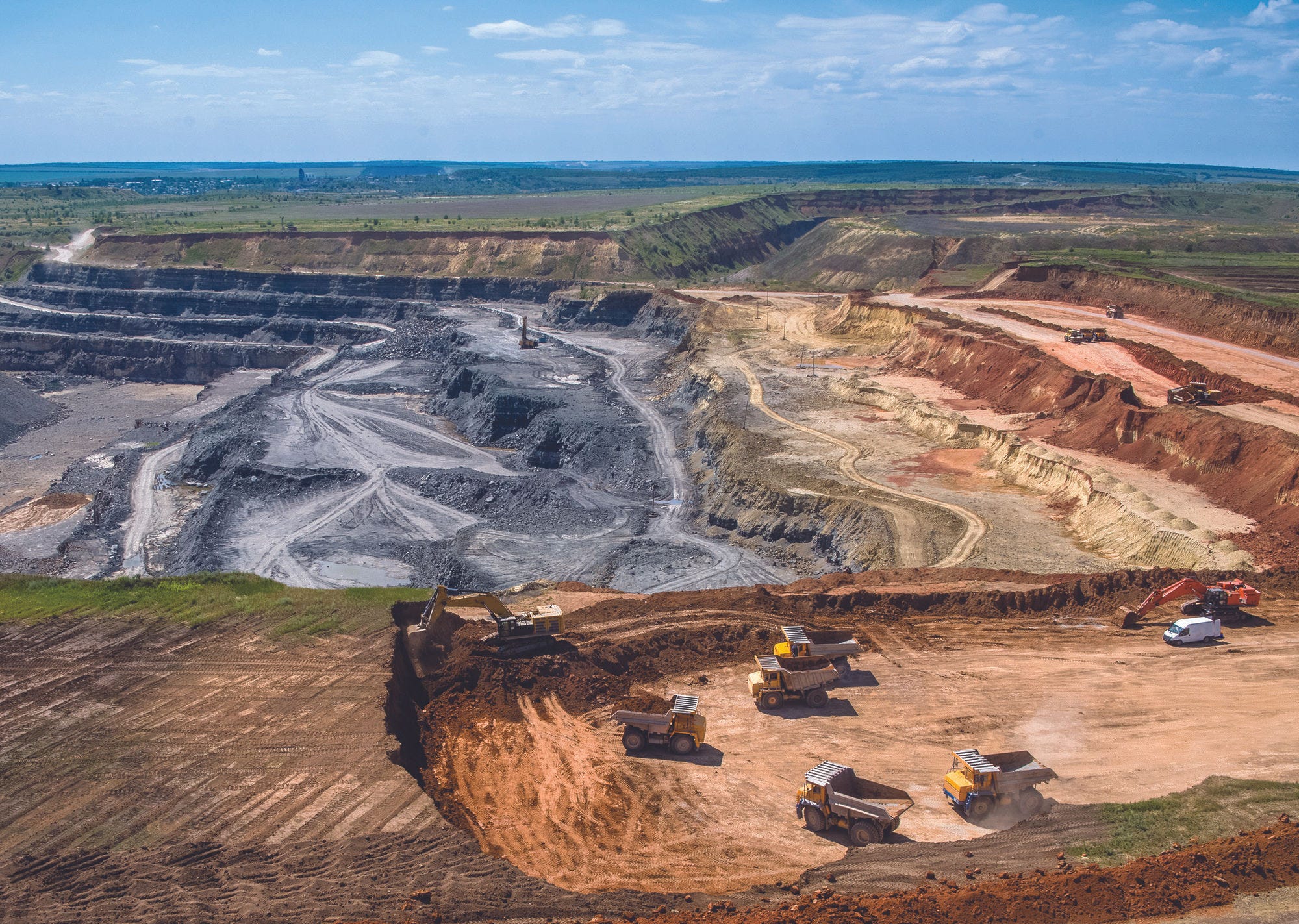[8] Bibas, R., J. Chateau and E. Lanzi (2021), Policy scenarios for a transition to a more resource efficient and circular economy, https://doi.org/10.1787/c1f3c8d0-en.
[48] Danielsen, F. (2021), “The Concept, Practice, Application, and Results of Locally Based Monitoring of the Environment”, BioScience, Vol. 71/5, pp. 484-502, https://doi.org/10.1093/biosci/biab021.
[39] EC Joint Research Center (2021), Collection of available techniques for the prevention or reduction of environmental impacts in non-energy extractive industries (NEEI), https://publications.jrc.ec.europa.eu/repository/handle/JRC125247 (accessed on 2023).
[23] European Union (2021), Capacity4Dev: Strategic Environmental Assessment.
[18] Garbarino, E. et al. (2021), Collection of available techniques for the prevention or reduction of environmental impacts in non-energy extractive industries (NEEI), EUR 30827 EN, Publications Office of the European Union, Luxembourg.
[41] Global Industry Standard on Tailings Management (2020), , https://globaltailingsreview.org/ (accessed on 2023).
[22] IAIA (n.d.), International Association of Impact Assessment, https://www.iaia.org/uploads/pdf/Fastips_18%20Scoping.pdf (accessed on 2023).
[21] IBAT Alliance (n.d.), Integrated Biodiversity Assessment Tool, https://www.ibat-alliance.org/ (accessed on 2023).
[3] IEA (2021), The Role of Critical Minerals in Clean Energy Transitions.
[14] IFC (2013), Cumulative Impact Assessment and Management: Guidance for the Private Sector in Emerging Markets, https://www.ifc.org/wps/wcm/connect/58fb524c-3f82-462b-918f-0ca1af135334/IFC_GoodPracticeHandbook_CumulativeImpactAssessment.pdf?MOD=AJPERES&CVID=kbnYgI5 (accessed on 2023).
[31] IFC (2012), Biodiversity Conservation and Sustainable Management of Living Natural Resources, https://www.ifc.org/en/insights-reports/2012/ifc-performance-standard-6 (accessed on 2023).
[40] IGF (2021), Guidance for Governments: Environmental management and Environmental management and, https://www.igfmining.org/resource/guidance-for-governments-environmental-management-and-mining-governance/ (accessed on 2023).
[10] IGF (2017), Global Trends in Artisanal and Small-Scale Mining (ASM): A Review of Key Numbers and Issues, IISD, https://www.iisd.org/system/files/publications/igf-asm-global-trends.pdf.
[25] Lead Recycling Africa Project (2016), Findings from Lead Recycling Africa Project, https://www.oeko.de/oekodoc/2549/2016-076-de.pdf.
[50] Maddox, T. et al. (2019), Forest-Smart Mining: Identifying Factors Associated with the Impacts of Large-Scale Mining on Forests.
[11] Moore, K. et al. (2020), “The re-direction of small deposit mining: Technological solutions for raw materials supply security in a whole systems context”, Resources, Conservation & Recycling, Vol. 7, https://doi.org/10.1016/j.rcrx.2020.100040.
[16] OECD (2023), OECD Guidelines for Multinational Enterprises on Responsible Business Conduct, OECD Publishing, Paris, https://doi.org/10.1787/81f92357-en.
[47] OECD (2021), Costs and Value of Due Diligence in Mineral Supply Chains - OECD Position, https://mneguidelines.oecd.org/costs-and-value-of-due-diligence-in-mineral-supply-chains.pdf.
[7] OECD (2021), The role of OECD instruments on responsible business conduct in progressing environmental objectives, https://mneguidelines.oecd.org/The-role-of-OECD-instruments-on-responsible-business-conduct-in-progressing-environmental-objectives.pdf.
[13] OECD (2021), Trends in Stakeholder Reporting: Mineral Supply Chains, https://mneguidelines.oecd.org/trendsinstakeholderreportingmineralsupplychains.htm.
[6] OECD (2019), Business Models for the Circular Economy: Opportunities and Challenges for Policy, OECD Publishing, Paris, https://doi.org/10.1787/g2g9dd62-en.
[2] OECD (2019), Global Material Resources Outlook to 2060: Economic Drivers and Environmental Consequences, OECD Publishing, Paris, https://doi.org/10.1787/9789264307452-en.
[17] OECD (2019), Global Material Resources Outlook to 2060: Economic Drivers and Environmental Consequences, OECD Publishing, Paris, https://doi.org/10.1787/9789264307452-en.
[15] OECD (2018), OECD Due Diligence Guidance for Responsible Business Conduct, OECD, https://mneguidelines.oecd.org/OECD-Due-Diligence-Guidance-for-Responsible-Business-Conduct.pdf.
[51] OECD (2017), OECD Due Diligence Guidance for Meaningful Stakeholder Engagement in the Extractive Sector, OECD Publishing, Paris, https://doi.org/10.1787/9789264252462-en.
[32] OECD (2016), Biodiversity Offsets: Effective Design and Implementation, https://doi.org/10.1787/9789264222519-en.
[12] OECD (2016), FAQ on Sourcing Gold from Artisanal and Small-Scale Miners, http://mneguidelines.oecd.org/FAQ_Sourcing-Gold-from-ASM-Miners.pdf.
[24] OECD (2016), OECD Due Diligence Guidance for Responsible Supply Chains of Minerals from Conflict-Affected and High-Risk Areas: Third Edition, OECD Publishing, Paris, https://doi.org/10.1787/9789264252479-en.
[49] OECD (1996), OECD GUIDELINES FOR TESTING OF CHEMICALS. PROPOSAL FOR UPDATING GUIDELINE 305. Bioconcentration: Flow-through Fish Test, https://www.oecd.org/env/ehs/testing/E305_Fish%20Bioaccumulation.pdf.
[4] OECD (n.d.), Environment at a Glance, OECD Publishing, Paris, https://doi.org/10.1787/19964064.
[5] OECD (n.d.), OECD Environment Working Papers, OECD Publishing, Paris, https://doi.org/10.1787/19970900.
[28] SER (n.d.), International Responsible Business Agreement for the Metals Sector, https://www.imvoconvenanten.nl/en/metals-sector/convenant (accessed on 2023).
[42] Stepenuck, K. (2015), “Individual- and community-level impacts of volunteer environmental monitoring: a synthesis of peer-reviewed literature”, Ecology and Society, Vol. 20/3, https://doi.org/10.5751/ES-07329-200319.
[43] Stepenuck, K. (2013), Improving understanding of outcomes and credibility of volunteer environmental monitoring programs. Dissertation. University of Wisconsin–Madison, Madison, Wisconsin, USA..
[44] Sydow, J. et al. (2021), Environmental responsibility through supply chains: Insights from Latin America..
[36] The Cyanide Code (n.d.), , https://cyanidecode.org/ (accessed on 2023).
[29] UN (2022), A/76/L.75, The human right to a clean, healthy and sustainable environment : draft resolution, https://digitallibrary.un.org/record/3982508?ln=en.
[37] UN (2013), Minamata Convention on Mercury, https://mercuryconvention.org/en/documents/minamata-convention-mercury-text-and-annexes (accessed on 2023).
[45] UN (2005), Resolution 60/147 Basic Principles and Guidelines on the Right to a Remedy and Reparation for Victims of Gross Violations of International Human Rights Law and Serious Violations of International Humanitarian Law, https://www.ohchr.org/en/instruments-mechanisms/instruments/basic-principles-and-guidelines-right-remedy-and-reparation.
[30] UN (1992), Convention on Biological Diversity, https://www.cbd.int/convention/text/.
[26] UNEP (2022), How disposable tech is feeding an e-waste crisis, https://www.unep.org/news-and-stories/story/how-disposable-tech-feeding-e-waste-crisis.
[46] UNEP (2019), Gloabl Resources Outlook 2019, https://www.resourcepanel.org/reports/global-resources-outlook.
[27] UNEP (n.d.), E-WASTE 2.0, https://wedocs.unep.org/bitstream/handle/20.500.11822/7587/e_waste_infog_en.pdf?sequence=5&%3BisAllowed=y%2C%20Chinese%7C%7Chttps%3A//wedocs.unep.org/bitstream/handle/20.500.11822/7587/-E-waste_20_Recycling_for_sustainability-2016E-waste_infog_zh.pdf.p (accessed on 2023).
[19] UNISDR (2008), Developing Early Warnin Systems: A Checklist: EWC III Third international Conference on Early Warning 27-29 March 2006 at Bonn, Germany, https://www.unisdr.org/files/608_10340.pdf (accessed on 2023).
[1] United Nations Framework Convention on Climate Change (2016), Decision 1/CP.21 Adoption of the Paris Agreement FCCC/CP/2015/10/Add.1, par. 133,, https://undocs.org/en/FCCC/CP/2015/10/Add.1.
[38] US EPA (n.d.), Mercury Specific Laws and Regulation.
[35] World Bank (2022), Forest-Smart Mining : Guidance to Applying Nature-Based Solutions in the Large-Scale Mining Sector, https://policycommons.net/artifacts/2419759/forest-smart-mining/3441396/ (accessed on 2023).
[34] World Bank (2021), Developing Forest-Smart Artisanal and Small-Scale Mining (ASM) Standards.
[9] World Bank (2020), Minerals for Climate Action: The Mineral Intensity of the Clean Energy Transition, https://pubdocs.worldbank.org/en/961711588875536384/Minerals-for-Climate-Action-The-Mineral-Intensity-of-the-Clean-Energy-Transition.
[33] World Bank (2019), Forest-Smart Mining: Identifying Factors Associated with the Impacts of Large-Scale Mining on Forests, https://openknowledge.worldbank.org/entities/publication/55579809-e147-5c25-a222-d976a8fac8db (accessed on 2023).
[20] World Resources Institute (2021), Aqueduct Water Risk Atlas, https://www.wri.org/data/aqueduct-water-risk-atlas.
